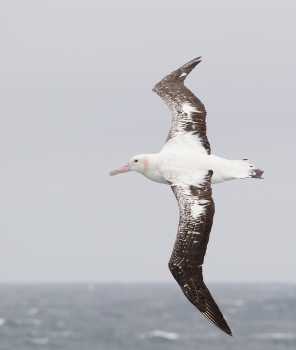Claire Tancell (Conservation Science Group, Department of Zoology, University of Cambridge, UK) and colleagues have published in the journal Biological Conservation on using tracked procellariiform seabirds to further marine spatial planning in the South Atlantic.
The paper’s abstract follows:
“Tracking of seabirds at sea is valuable for marine spatial planning. Many seabirds are of conservation concern, including albatrosses and large petrels (Procellariiformes) which face a major threat from mortality in fisheries. We examine how important areas used by seven of these species breeding at South Georgia change throughout the year, based on tracking data collected between 1991 and 2012, and discuss the implications for spatial management in the region within the current jurisdictional framework.
Foraging areas overlapped with a patchwork of national and international management organizations, and areas outside clear jurisdiction. National waters were generally unimportant, besides that of South Georgia. The other exception was Falkland Islands coastal waters, which were important for wandering albatrosses Diomedea exulans during incubation, and were opened for new oil and gas drilling in 2015. The marine protected area established at the South Orkney Islands protects very little habitat used by the tracked seabirds; however, a northern extension of this would benefit a number of species at different breeding stages.
The area around South Georgia was important year-round, including in periods when fishing is allowed. A contiguous region to the north of this was also important and here, mechanisms should be improved to ensure compliance with bird bycatch mitigation recommendations. The study highlighted the use of tracking for identifying key areas for pelagic albatrosses and petrels, and the advantages of incorporating these data into a multilateral approach to marine spatial planning to ensure the future conservation of these highly-threatened marine predators.”

Wandering Albatross at sea in the South Atlantic, photograph by John Chardine
With thanks to Richard Phillips.
Reference:
Tancell, C., Sutherland, W.J. & Phillips, R.A. 2016. Marine spatial planning for the conservation of albatrosses and large petrels breeding at South Georgia. Biological Conservation 198: 165-176.
John Cooper, ACAP Information Officer, 17 May 2016

 English
English  Français
Français  Español
Español